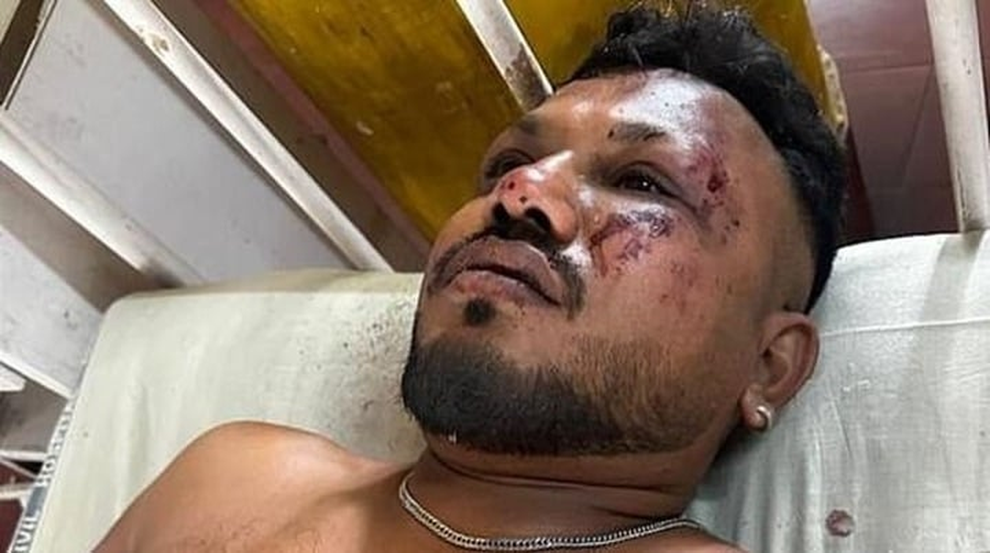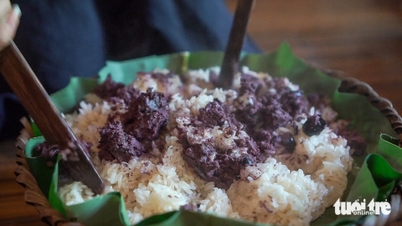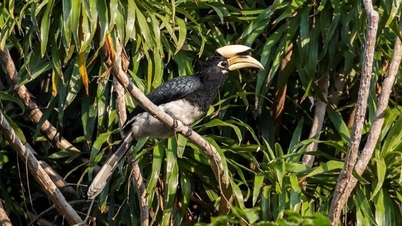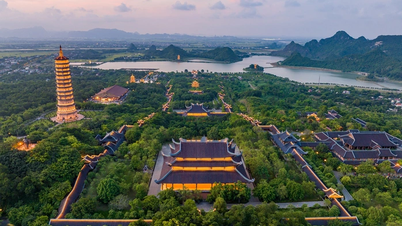The aviation disaster just happened on June 12 when an Air India (India) Boeing 787-8 Dreamliner flight crashed right after taking off from Ahmedabad (India) on its way to London (UK).
The tail of the plane fell onto a building (Photo: Reuters).
The accident killed at least 290 people (including those on the plane and those on the ground). At the time of the accident, the plane was carrying 242 passengers and crew.
However, only the passenger sitting in seat 11A miraculously survived, attracting the attention of the media and public opinion around the world , while all the other people on the plane were confirmed dead by local authorities.
The survivor has been identified as Vishwash Kumar Ramesh, 40, a British national. Images taken at the scene show Mr. Kumar injured but still able to walk, suggesting he did not suffer life-threatening injuries. His survival is a rare bright spot in an otherwise tragic incident.
Where is seat 11A located on Air India flight?
The plane involved in the crash was a Boeing 787-8 Dreamliner. According to the seating chart, seat 11A was in the first row of economy class, right behind business class.
The only passenger survived the accident (Photo: HT).
This is the window seat on the left side of the plane, near the front. This position is said to increase the chance of survival in case of an accident. In addition, seat 11A is also located right behind the door, which acts as an emergency exit in case of an emergency.
According to the latest information from CNN, a doctor said that victim Ramesh's condition is "not too critical" and he could be discharged in the next few days.
"He is not seriously injured and is under close observation. His condition is stable now," said Dr Rajnish Patel, Professor and Head of Surgery at Ahmedabad Civil Hospital.
However, aviation experts described the passenger's survival as "miraculous".
The moment the Air India plane carrying 242 passengers crashed ( Video source: Daily Mail).
Mr. David Soucie, former safety inspector of the US Federal Aviation Administration, expressed surprise that a person sitting in seat 11A could survive such an accident.
"That seat is exactly where the wing strut would be underneath. It would be a solid place for the plane to hit the ground. But in terms of survivability above, it's really amazing," he analyzed.
How does seat position affect survival rates on an airplane?
After recent air accidents, many people wonder, which is the safest seat with the highest survival rate when a plane crashes?
To answer this question, many experts have given their own analysis for many different reasons.
According to Alison Duquette, a spokeswoman for the Federal Aviation Administration, plane crashes can come in many forms, including collisions, landing mishaps, and runway collisions. There is no single safest seat.
In many tragic plane crashes, passengers have no chance of survival regardless of where they sit (Photo: Quora).
However, based on analysis data from the US National Transportation Safety Board (NTSB) of commercial airline accidents since 1971, there is a correlation between the fatality and survival rates and seat position. Passengers sitting near the tail of the plane have nearly 40% more chance of survival than those sitting in the front.
Seats in the back of the plane are often frowned upon by travelers for a number of reasons. One of them is the long wait to disembark. But an analysis of 65 plane crashes by the Aviation Safety Network found that in more than 50% of crashes, they were the safest place to be, based on survival rates.
Specifically, the middle seats of the plane had the highest fatality rate at 39% and 38% for the front seats. The rear seats had a lower fatality rate, at about 32%.
The middle row of seats is also dangerous. Because commercial aircraft often store fuel on the wings, it can easily catch fire or explode, reducing the chance of survival for passengers in the event of an accident.
In addition, the emergency situation will also determine the possibility of survival. If the plane crashes into a mountainside or falls into the sea, the chance of survival for passengers is almost zero.
Take the 1979 New Zealand air disaster, for example. Air New Zealand Flight TE901 crashed into the side of Mount Erebus in Antarctica, killing all 257 passengers and crew.
However, the US Federal Aviation Administration still believes that the possibility of death in plane crashes has little to do with seating position, but is more influenced by the circumstances surrounding the crash.
For example, if the tail of the plane is subjected to a large impact, passengers in the middle or front have a higher survival rate than those sitting in the back.
Source: https://dantri.com.vn/du-lich/vi-sao-chi-nguoi-ngoi-ghe-11a-tren-may-bay-thoat-chet-241-khach-tu-vong-20250613110001666.htm





![[Photo] Government holds a special meeting on 8 decrees related to the International Financial Center in Vietnam](https://vphoto.vietnam.vn/thumb/1200x675/vietnam/resource/IMAGE/2025/11/04/1762229370189_dsc-9764-jpg.webp)

![[Photo] Ca Mau "struggling" to cope with the highest tide of the year, forecast to exceed alert level 3](https://vphoto.vietnam.vn/thumb/1200x675/vietnam/resource/IMAGE/2025/11/04/1762235371445_ndo_br_trieu-cuong-2-6486-jpg.webp)

![[Photo] Ho Chi Minh City Youth Take Action for a Cleaner Environment](https://vphoto.vietnam.vn/thumb/1200x675/vietnam/resource/IMAGE/2025/11/04/1762233574890_550816358-1108586934787014-6430522970717297480-n-1-jpg.webp)
![[Photo] Comrade Nguyen Duy Ngoc holds the position of Secretary of the Hanoi Party Committee](https://vphoto.vietnam.vn/thumb/1200x675/vietnam/resource/IMAGE/2025/11/04/1762234472658_a1-bnd-5518-8538-jpg.webp)





























































































Comment (0)